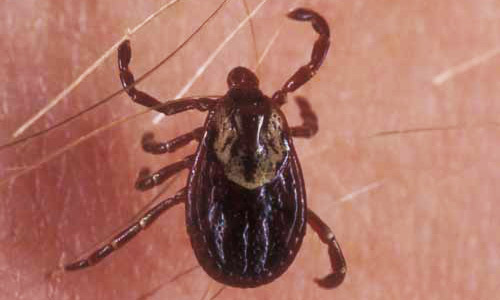Ticks are tiny insects that feed on the blood of mammals and birds, and are fairly active in the summer months.
The insects can be found in long grass, woodland areas, and in shady, humid environments - like a pile of leaves - and can spread Lyme disease.
Because of this, we need to be on tick-watch whenever we are in an area when they are likely to live to prevent the risk of infection.
How can adults and children avoid being bitten?
- Wear long trousers and a long-sleeved shirt with a collar
- Tuck your trousers into your socks
- Use an insect repellent, such as DEET (but use a low-strength DEET if you are pregnant – your local pharmacist can advise you)
- Always check for ticks after being out and about: pay particular attention to your scalp, neck and any warm skin folds
- Check your pets regularly also
What should you do if you find a tick on you?
- Remove any ticks with a tweezers carefully: don't squeeze or twist when taking them out
- Wash the skin thoroughly
- Time is on your side: the tick must be attached for around 36 hours before the infection will be passed on
Consult with a GP if the following symptoms develop:
- A skin rash which can develop between 3 days and a month after a tick bite. The rash can be visible for up to a month and may grow to be several inches in diameter.
- Flu-like symptoms such as headache, sore throat, neck stiffness, fever, muscle aches and general fatigue
Always contact your GP if you have any concerns.















